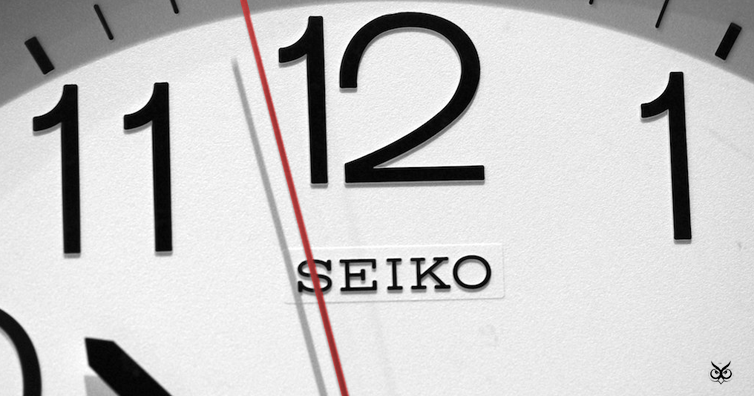I know this sounds kind of silly but have you ever wondered how did people decide on how long a second was? Well, we certainly did and after reading quite a bit about the whole “time” concept, we found out that seconds, minutes and hours varied widely throughout the centuries and civilizations.
But first, let’s have a brief history lesson on how people use to track time.
Early man tracked time day by day using apparent time (time calculated based on the motion of the sun) with sundials. The Egyptians defined hours as 1/12th of either day or night, and had seasonal variations on the length of their hour. Greek astronomers were the first to establish the modern hour, by dividing the day into six parts and then dividing those parts into four smaller parts. They also had an early version of the minute, which was based on how long it took for the sun to travel one degree along the sky (about four minutes). (the article continues after the ad)
In 1000, a Persian scholar named al-Biruni first termed the word second when he defined the period of time between two new moons as a figure of days, hours, minutes, seconds, thirds, and fourths. The minute was the first subdivision of the hour by 60, then the second, and so on. English philosopher, Roger Bacon, did this again in the 1200’s, but he started with hours, giving a more accurate figure.
In the late 1500s, true standard seconds came into existence with the advent of mechanical clocks, so that the time could be measured objectively from mean-time instead of deriving it from the apparent-time. The first clock with a hand indicating seconds was built between 1560-70 and in 1579 we had the first clock with second markings. However, they weren’t very accurate, and the second remained arbitrary from machine to machine and unable to be reliably measured.
But, in 1670, William Clement tinkered with the physics and built a clock precise enough that the second was now an established unit of time. By 1862 it was established that the second would be the base unit of time for all scientific research, along with the millimeter and milligram. By the 1940s, the British Association for the Advancement of Science (BAAS), defining the second as 1/86,400th of a solar day.
Since them we’ve just been refining the accuracy of what we call a second, accounting for the Earth’s axis and ever-so slowly declining rotational velocity, to the point where it’s not even measured by observations based on the earth and sun, but by the distance light travels in a vacuum or how many vibrations a cesium atom makes. We’ve divided time so hard that to do so any further wouldn’t make sense; events in subatomic physics just don’t happen quickly enough for smaller units of time to be measured.
If you like what you read, then you will definitely love this one: This Is Why A Minute Has 60 Seconds And A Full Circle Is 360 Degrees


Photo: Earls37a / Flickr
Widget not in any sidebars



